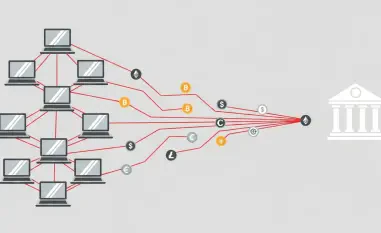In recent years, Vietnam has seen a significant rise in cybercriminals leveraging artificial intelligence to execute sophisticated extortion scams. By exploiting advancements in deepfake technology, scammers are creating realistic yet fabricated videos of victims. These videos often feature the victims’ faces superimposed on compromising content, serving as potent tools for blackmail. The perpetrators scour social media platforms and data leaks to gather images, constructing believable deepfakes, before threatening victims with public exposure unless a ransom is paid.
Evolution of Cybercrime Methods in Vietnam
Vietnamese authorities have pinpointed a noticeable trend where cybercriminals now use deepfake software to craft realistic but false videos for extortion purposes. Deputy Director of the Hà Nội Police Department’s Criminal Police Division, Lý Hoài Nam, has shared insights into the enhanced tactics employed by these criminals. According to Nam, the sophistication of such scams has drastically increased, utilizing advanced image and video manipulation techniques. Typically, scammers demand money in exchange for not releasing the fabricated videos, with threats to expose the content to friends and social circles if their demands are not met.
Prominent cases highlight the severity of this issue. In early 2024, a cybercriminal organization in Ho Chi Minh City was dismantled after utilizing deepfake technology to extort money from local entrepreneurs and celebrities. This group collected images from social media to create sensitive videos, demanding large sums for their suppression. One businessman, under immense pressure, paid a ransom of VNĐ500 million ($20,000) but continued facing threats, prompting him to report the matter to the authorities. Subsequent police action led to arrests and the confiscation of related technological equipment.
Similarly, in Hà Nội, a high school girl received a disturbing deepfake video with her face appended and a demand for VNĐ50 million (,000) to prevent its public release. The incident caused widespread panic among her friends, but her family intervened, leading to police involvement and arresting the culprits. These cases illustrate the grave dangers posed by advanced cybercrime and the imminent threat of reputational damage, which often prevents victims from coming forward to report the crime.
Authorities’ Response and Preventive Measures
Deputy Director Nam emphasized the importance of reporting such extortion cases, attributing cybercrime’s persistence to unreported incidents. He urged the public to limit sharing personal photos online and strengthen online security practices, such as using strong passwords, activating multi-factor authentication, and being cautious about app permissions.
Minister of Public Security, Lương Tam Quang, has stated that tech-driven crimes are increasingly complex, often executed across borders. He underscored the challenges posed by cyberattacks, online fraud, and other AI-related crimes, characterized by anonymity and organization. To counteract these threats, the ministry is enhancing technological measures, including developing specialized software for investigations and introducing a crime-reporting feature on the VNeID app under Project 06.
Ngô Tấn Vũ Khanh, the country director at Kaspersky, identified deepfakes as one of the most severe cybersecurity risks. Cybercriminals use AI to create convincing images, videos, and even voice recordings, enabling them to circumvent security protocols, perform illegal transactions, and undermine authentication systems. Data from Kaspersky revealed that 21 percent of phishing emails in 2024 were AI-generated, showcasing the increasing sophistication of these attacks. Khanh also exposed scams involving identity theft through impersonation, where criminals pose as bank staff to extract one-time passwords or biometric data. Moreover, malware disguised as legitimate applications facilitates remote theft of sensitive information.
Recommendations and Future Considerations
In recent years, Vietnam has experienced a notable increase in cybercriminal activities, particularly with criminals leveraging artificial intelligence to conduct complex extortion schemes. These scams often involve the use of deepfake technology. By taking advantage of advancements in this area, scammers are able to create convincing yet entirely fabricated videos of their victims. Typically, these videos depict the victim’s face seamlessly superimposed onto compromising situations, making them effective tools for blackmail.
The scammers begin by scouring social media platforms and various data breaches to collect images of their targets. Using the













